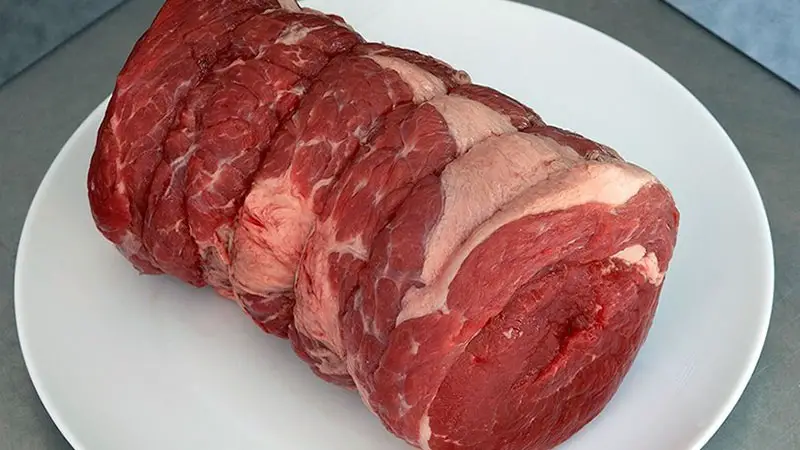Red meat often gets a bad rap in dietary discussions, but its health benefits are undeniable when consumed in moderation.
Packed with essential nutrients like iron, zinc, and vitamin B12, red meat can play a vital role in maintaining a balanced diet. These nutrients are crucial for energy production, immune function, and overall well-being.
Also, red meat is an excellent source of high-quality protein, which is essential for muscle growth and repair. For those engaged in regular physical activity, incorporating red meat into their diet can enhance performance and recovery.
By understanding the nutritional value of red meat, individuals can make informed choices that support their health and lifestyle goals.
What Is Red Meat?
Red meat refers to meat that is red when raw, due to its higher myoglobin content compared to white meat. This includes the flesh from mammals, such as beef, lamb, and pork.
In both culinary and nutritional contexts, red meat remains a key protein source. Nutritional science classifies red meat based on its myoglobin levels, which gives it a distinct red color before cooking.
Poultry is not considered red meat, even though it can sometimes appear dark when raw. This article focuses on understanding red meat’s nutritional value and its benefits when included in a balanced diet.
Key Nutrients Found In Red Meat
Red meat is rich in essential nutrients that support overall health. Key nutrients include:
- Protein: Supports muscle growth and repair (22 grams per 85 grams of cooked ground beef).
- Iron: Prevents anemia (2.1 mg per serving of ground beef).
- Vitamin B12: Crucial for nerve function and DNA synthesis (2.3 micrograms, 96% of the daily value).
- Zinc: Boosts the immune system and aids wound healing (5.31 mg, 100% of the daily value).
7 Health Benefits of Red Meat

Red meat, including beef, lamb, and pork, is frequently discussed in the context of health implications.
Nonetheless, it is acknowledged for its numerous health benefits due to its rich nutrient profile. Here are seven key health benefits associated with consuming red meat:
1. Source of L-Carnitine
Red meat offers a rich source of L-carnitine, a crucial nutrient for fatty acid metabolism. For example, a 100-gram serving of beef contains about 56-162 mg of L-carnitine, highlighting its nutritional value.
L-carnitine aids in converting fat to energy, benefiting those looking to enhance physical performance.
This nutrient also supports heart health by improving the function of the mitochondria, the powerhouses of cells. Including red meat in the diet ensures sufficient L-carnitine intake, promoting overall well-being.
2. Promotes Muscle Health
Red meat supports muscle growth and repair due to its protein content. Consuming red meat provides essential amino acids needed for muscle tissue regeneration.
Athletes benefit significantly because the protein aids in post-workout recovery, strengthening muscles and enhancing gains. Red meat also offers fats and micronutrients that play a role in muscle health.
Those at risk for malnutrition can maintain muscle mass by including red meat in their diet. Its protein assists with hormone regulation, preventing diabetes symptoms.
Overall, incorporating red meat addresses various aspects of muscle health, making it an excellent dietary choice for maintaining and building muscle.
3. Builds Strong Bones
Red meat supports bone strength by providing phosphorus and magnesium, essential minerals found in protein. As individuals age, muscle strength often declines.
Consuming more protein, such as that from red meat, can slow bone loss. Some studies indicate that people assigned female at birth who eat more meat have lower osteoporosis rates, a condition making bones brittle.
Other research suggests plant-based protein might be healthier overall due to lower saturated fats. Nonetheless, red meat’s nutrient content offers substantial benefits for bone health.
4. Contains Vitamins and Minerals
Red meat is a significant source of essential vitamins and minerals. It supplies iron, which prevents anemia and promotes energy production, with an 85-gram serving of cooked ground beef offering 2.1 mg of iron.
Vitamin B12 is abundant in red meat too, meeting 96% of the daily value in the same serving. This nutrient supports nerve function and red blood cell formation.
Red meat also contains zinc, crucial for immune function, particularly in the elderly, and selenium, which helps prevent inflammation. With moderate consumption, lean red meat offers a nutrient-dense option that supports overall health.
5. Helps Prevent Anemia
Red meat reduces the risk of anemia by providing easily absorbed iron and vitamin B12. Iron deficiency is common in those following vegan or vegetarian diets.
Symptoms of anemia include dizziness and cold hands and feet. Eating red meat helps replenish iron stores. An 85-gram serving of cooked ground beef contains 2.1 mg of iron and 2.3 micrograms of vitamin B12.
These nutrients support red blood cell production and oxygen transport, addressing anemia effectively.
6. Conjugated Linoleic Acid
Red meat contains conjugated linoleic acid (CLA), a fatty acid with health benefits. Studies suggest CLA might aid fat loss, support muscle growth, and improve overall health.
Beef, lamb, and pork are natural sources of CLA. Each 100-gram serving of cooked beef typically provides 4.3 mg of CLA. Including CLA in the diet can support a healthy metabolism.
Research links higher CLA intake to reduced cancer risks and enhanced immune function, emphasizing its importance in a balanced diet.
7. Beef Contains the Performance Enhancer Creatine
Beef provides notable levels of creatine, which supports physical performance. Approximately 1.4 grams of creatine can be found in a 100-gram serving of beef.
This compound enhances strength, especially in activities requiring short, intense bursts of energy.
Athletes benefit from improved muscle mass and recovery. Studies also suggest creatine impacts cognitive function positively.
Regular beef consumption ensures a steady supply of creatine, benefiting both physical and mental performance.
Types of Red Meat

Red meat encompasses various meats derived from mammals. The classification of red meat can differ based on culinary, nutritional, and cultural perspectives, but generally includes the following types:
Conventional Meat
Conventional meat comes from animals raised in standard farming operations. This meat is widely available and typically more affordable.
Beef from conventional sources provides critical nutrients like iron and vitamin B12. However, consumers concerned about antibiotics and hormones may prefer other options.
Grass-fed Meat
Grass-fed meat comes from animals that have grazed on pasture throughout their lives. This type of meat contains higher levels of omega-3 fatty acids and antioxidants, enhancing cardiovascular health.
Grass-fed beef also tends to have less fat than its conventional counterpart, making it a leaner option.
Organic Meat
Organic meat comes from animals raised without synthetic hormones or antibiotics and with organic feed.
Ensuring no pesticides or genetically modified organisms are present, it provides a cleaner choice for health-conscious consumers. Organic beef often contains more beneficial nutrients, like omega-3 fatty acids.
Processed Meats
Processed meats include items like sausages, hot dogs, and bacon. These meats undergo various preservation techniques, including curing, smoking, or adding preservatives.
Despite their convenience, processed meats often contain higher levels of sodium and carcinogens, which might pose health risks when consumed frequently.
Potential Risks And How To Mitigate Them

Understanding the potential risks of red meat helps make informed dietary choices to enjoy its benefits while minimizing adverse effects.
Saturated Fats And Heart Disease
Red meat has high levels of saturated fats, raising LDL cholesterol linked to heart disease. Choosing lean cuts and trimming visible fat can reduce saturated fat intake.
Including heart-healthy foods like fruits, vegetables, and whole grains also benefits cardiovascular health.
Processed Versus Unprocessed Meat
Processed meats often contain higher sodium and preservatives, increasing health risks. Unprocessed meats, such as fresh beef or lamb, offer more nutrients without added chemicals. Limiting processed meat consumption by opting for fresh, unaltered alternatives is advisable for better health outcomes.
Recommended Portion Sizes
Eating red meat in moderation ensures nutrient intake without overconsumption. The American Institute for Cancer Research suggests limiting red meat to 18 ounces per week. Smaller portions, like a 3-ounce serving per meal, balance intake and health benefits.
Red Meat And Cancer
Research links high red meat intake to colorectal cancer due to compounds formed during cooking.
Reducing grilled and smoked meats, and incorporating more plant-based foods, can mitigate this risk. Eating a variety of protein sources also supports overall health.
Red Meat And Type 2 Diabetes
Studies indicate a correlation between red meat consumption and Type 2 diabetes risk due to saturated fats and heme iron.
Prioritizing leaner meats, white meats, and plant proteins helps balance diet. Regular exercise and a well-rounded diet reduce diabetes risk and improve health.
Frequently Asked Questions
How much red meat should I consume weekly?
It is recommended to limit red meat consumption to no more than 18 ounces per week. Choosing lean cuts and incorporating more plant-based foods can help maintain a balanced diet.
What is the impact of red meat on cognitive function?
Red meat contains creatine, a compound that supports physical and cognitive performance. Regular consumption can enhance strength, muscle mass, and potentially improve mental clarity.
Should I choose lean cuts of red meat?
Yes, choosing lean cuts of red meat can help reduce the intake of saturated fats, mitigating health risks while still benefiting from essential nutrients like iron and protein.
Does red meat stay in your system for 7 years?
A prevalent misconception is that meat “sits” in the gut for an extended period, but this is inaccurate.
The digestive system processes all types of food together, rather than separately by type. No food remains in the gut for an unusually long time.
Is red meat anti-inflammatory?
Experts specifically advise avoiding these inflammatory foods: Red meat, including steak and hamburgers, and processed meat, such as bologna, bacon, sausage, and lunchmeat.
Conclusion
Red meat provides essential nutrients that support overall health, muscle growth, and energy production. When consumed in moderation and selected wisely, it can be a valuable component of a balanced diet.
By understanding the nutritional benefits and potential risks, individuals can make informed dietary decisions that align with their health objectives.
Opting for lean cuts and incorporating a variety of nutrient-dense foods ensures red meat remains a beneficial part of a healthy lifestyle.
Additionally, red meat offers key vitamins and minerals such as iron, zinc, and B vitamins, which are crucial for immune function and cognitive health.
Pairing red meat with vegetables and whole grains creates well-rounded meals that enhance nutrition and promote long-term wellness.
